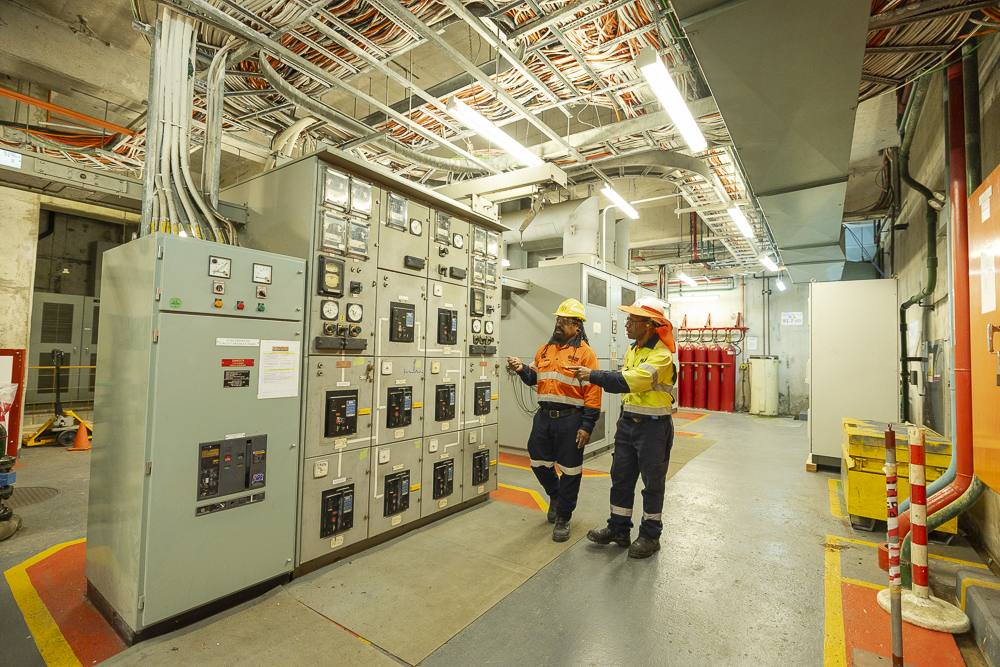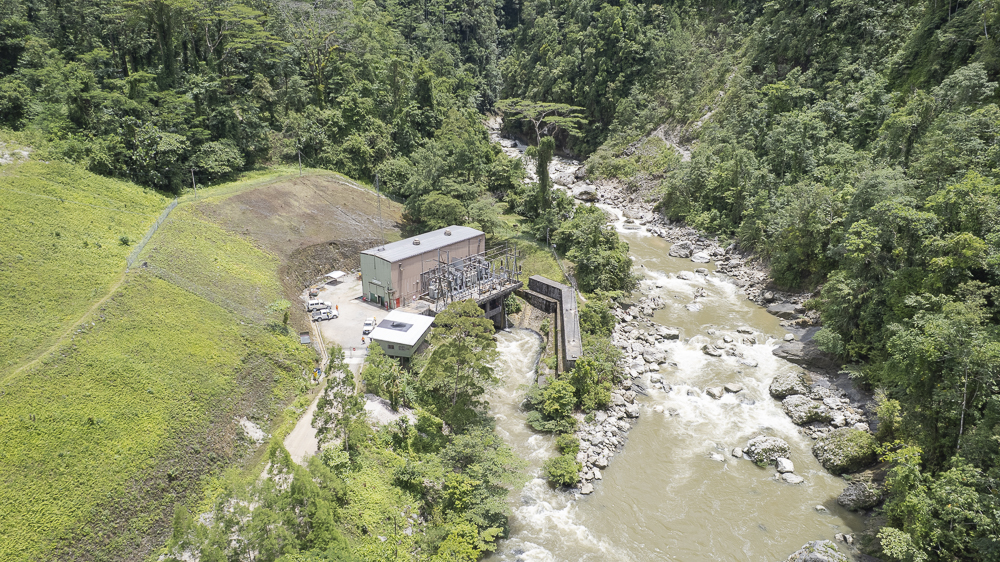
Power
Ok Tedi is both the largest power user and the largest power producer in the Western Provinces.
We sustainably generate the bulk of our power using hydroelectric generation, which, in combination with thermal power, meets the challenging demands of our township and operations.
Hydropower
Hydropower provides a highly efficient, cost-effective, renewable and sustainable energy solution for our region.
Known as the wettest mine site in the world, Mt Fubilan’s high rainfall can create some operational challenges, but also some advantages: the consistent high rainfall combined with the mountainous terrain create strong waterways which become the perfect hosts for hydroelectric power stations.
Average rainfall for Mt Fubilan/Tabubil area – 10,000mm per year
The majority of our power is generated by the Ok Menga hydroelectric station which significantly reduces our reliance on externally sourced fuels.
Situated over the Ok Menga River, about 15km south of Tabubil, the power station diverts water flow into an intake, through two Francis wheel turbines, which can be run individually or together to produce up to 56MW, depending on river flow.
The Ok Menga station is complemented by the smaller Yuk Creek hydroelectric station, which directs water from Yuk Creek, just north of the Tabubil township, through a single wheel turbine to generate up to 2.4 MW power.
Average 75% of power demand is met by hydroelectric power generation.
Due to the relatively low cost and environmental impact of hydroelectric power, compared to diesel thermal units, the use of hydro generation is maximised where possible.
To learn more about our plans to expand our hydro power capacity and ‘Light up the West’, see Strategy and Nation Building.

Thermal Power
Diesel-fuelled thermal power plays a vital supporting role in meeting Ok Tedi’s energy needs, particularly during rare dry weather events or when additional capacity is required.
The Tabubil thermal power station features a mix of diesel-powered reciprocating engines and turbines, delivering a combined installed capacity of 60 MW.
In Kiunga, power is independently supplied by a dedicated diesel generator station, while smaller thermal generation units located at Bige and other outstations ensure consistent and reliable power across all operational sites.
Fuel Supply
Maintaining a substantial store of diesel fuel to supply generators, and for vehicle operation, is critical for the smooth operation of the mine.
Each day, a convoy of trucks collects approximately 350kl of fuel from the storage tanks at Kiunga, travelling over 135km up the highway to reach the Tabubil township and then on to the Mine.
This daily transfer process supporting the power needs of our remote operations is a critical component of our logistics network.
